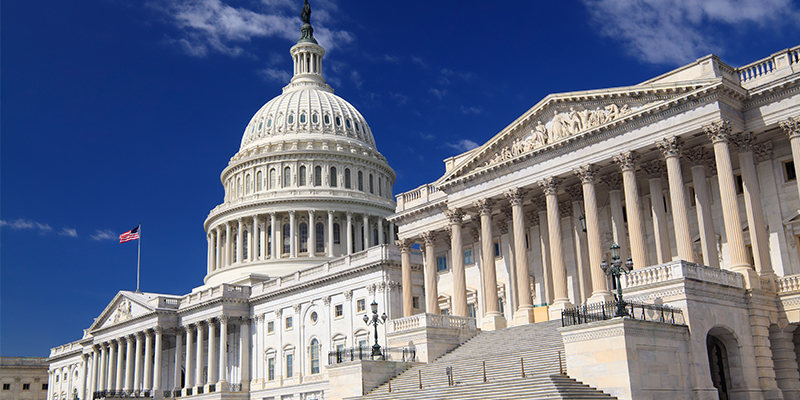By Brielle Scott
An annual study published by the NAIOP Research Foundation measures the contribution to GDP, salaries and wages generated and jobs supported from the development and operations of commercial real estate in the U.S. One of the authors of “Economic Impacts of Commercial Real Estate, 2025 U.S. Edition,” Brian Lewandowski, executive director, business research division at the Leeds School of Business at the University of Colorado Boulder, led a NAIOP webinar to share key metrics from the report and a look at where the economy is headed next.
“When we take a look at the basket of economic data that’s available right now, it still shows that the U.S. economy is on a really strong footing despite some of the tumult that we’ve seen in the news,” he said.
However, the breadth of data currently out there is in the rear view, Lewandowski clarified – it’s as of Q4 2024. It doesn’t include leading economic indicators like consumer confidence and business confidence or even the stock market, which is showing a lot of volatility in the current era of tariffs and other changes in the economy that appear to be disruptive in the short term.
Lewandowski did share a short-term baseline economic outlook from Moody’s Analytics which showed personal consumption expenditures in the near term are expected to continue to grow in real, inflation-adjusted terms. The forecast also shows a pullback in government spending and in gross private domestic investment as well as some changes in imports and exports. “Overall, continued growth on the consumer front,” he added.
The labor market also continued to grow in 2024 and into 2025. The March 2025 employment number from the Bureau of Labor Statistics shows there are over 159 million jobs in the U.S. economy and continued growth of 1.2% year over year – almost two million extra jobs compared to a year ago.
“So again, continued growth in the labor market… not showing a lot of disruption through the first three months of the year,” Lewandowski said.
Lewandowski then looked at employment recovery for specific areas that typically align with commercial real estate development: “Wholesale employment ties pretty well to industrial real estate, retail matches retail pretty closely, manufacturing also aligns with the industrial space… [For] office, we look at an agglomeration of professional and business services information and financial activities.”
Indexed from the beginning of the COVID-19 pandemic, the data show a drop in employment and the subsequent recovery around 2021 or 2022, depending on the employment group.
“But what we’re looking at on the far tail end [of the graph] in March 2025 is much slower growth,” Lewandowski pointed out. Office employment grew by just 0.1% year over year, manufacturing declined 0.6%, wholesale was up just 0.8% and retail was up 0.3%.
“That shows that there’s a bit of stagnation starting to happen in some of these critical industries that occupy the properties that we’re looking at that that have been developed or are in the process of being developed,” he said.
There has also been some upward drift in the unemployment rate, but looking at the measure of underemployment, which is people who are working part-time but would like to be working full-time, for example, that has moved upward to 7.9%. “I think this shows a little bit of softening as well in the labor market,” Lewandowski said.
Things are moving a little bit more in favor of employers at the end of 2024 and at the beginning of 2025, he added.
“There have never been more people working or wanting to work in this country, and the last three months are the highest three months we’ve ever had for the U.S. labor force.”
U.S. consumers have also weathered wild fluctuations in the rate of inflation.
In 2021, the consumer price index (CPI) crossed the critical 2% threshold. About 16 months later the CPI hit a peak; it took about 12 months for it to come back down and touch 3%, where it stayed for a while.
“Now we’ve been in the spot between 2% and 3% for several months, haven’t quite reached back to that 2% target rate, but you can see that in the latest data we did get some improvement on that metric,” Lewandowski said.
“Of course, that’s not really talking about where inflation is going – it’s just measuring where inflation has been. And there’s been plenty of discussion about what the impact of tariffs could mean for the consumer price index,” he pointed out.
What does the interest rate environment look like as many property owners (specifically in the office sector) are looking at refinancing?
“It’s the longest inverted yield curve that we’ve had in about 45 years,” said Lewandowski, though it appears to be normalizing. “Short-term rates are lower than the medium-term and long-term rates, which is what we would expect to see and want to see when we’re looking at interest rates.”
Lewandowski added a major caveat: “When we put this report together, it was really before this tariff discussion heated up,” he said. “We will be watching this very closely as we approach an update to [the report] and take a look at the Dodge Construction data and the [National Council of Real Estate Investment Fiduciaries] data near the end of 2025 to try and measure what the impacts of the tariffs are.”
Read the full report from the NAIOP Research Foundation and watch the archived webinar (free for NAIOP members).








